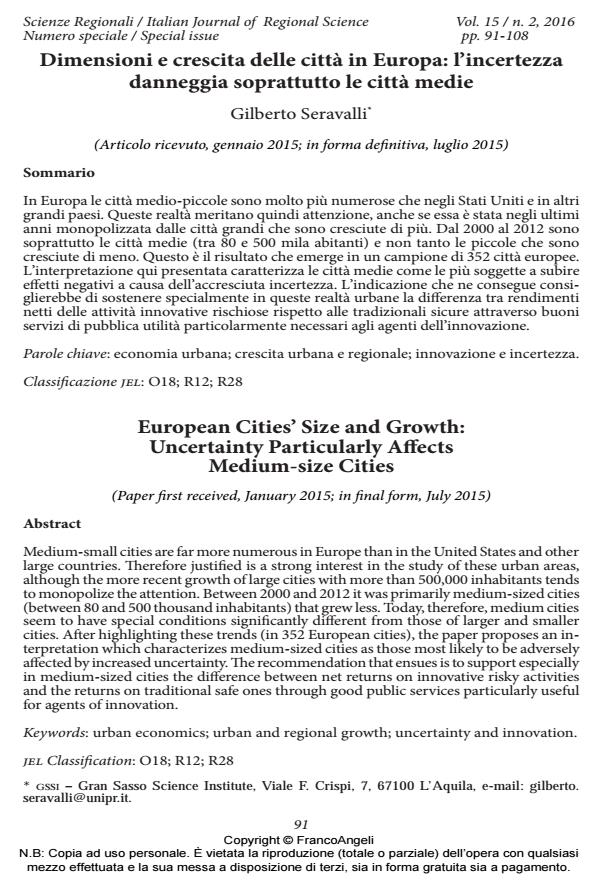European Cities’ Size and Growth: Uncertainty Particularly Affects Medium-size Cities
Journal title SCIENZE REGIONALI
Author/s Gilberto Seravalli
Publishing Year 2016 Issue 2016/2
Language Italian Pages 18 P. 91-108 File size 284 KB
DOI 10.3280/SCRE2016-002005
DOI is like a bar code for intellectual property: to have more infomation
click here
Below, you can see the article first page
If you want to buy this article in PDF format, you can do it, following the instructions to buy download credits

FrancoAngeli is member of Publishers International Linking Association, Inc (PILA), a not-for-profit association which run the CrossRef service enabling links to and from online scholarly content.
Medium-small cities are far more numerous in Europe than in the United States and other large countries. Therefore justified is a strong interest in the study of these urban areas, although the more recent growth of large cities with more than 500,000 inhabitants tends to monopolize the attention. Between 2000 and 2012 it was primarily medium-sized cities (between 80 and 500 thousand inhabitants) that grew less. Today, therefore, medium cities seem to have special conditions significantly different from those of larger and smaller cities. After highlighting these trends (in 352 European cities), the paper proposes an interpretation which characterizes medium-sized cities as those most likely to be adversely affected by increased uncertainty. The recommendation that ensues is to support especially in medium-sized cities the difference between net returns on innovative risky activities and the returns on traditional safe ones through good public services particularly useful for agents of innovation.
Keywords: Urban economics; urban and regional growth; uncertainty and innovation.
Jel codes: O18; R12; R28
Gilberto Seravalli, Dimensioni e crescita delle città in Europa: l’incertezza danneggia soprattutto le città medie in "SCIENZE REGIONALI " 2/2016, pp 91-108, DOI: 10.3280/SCRE2016-002005